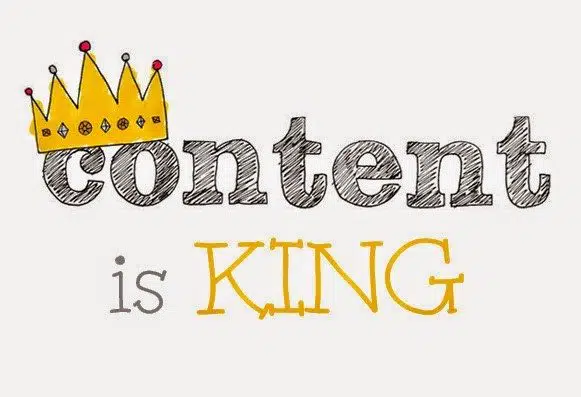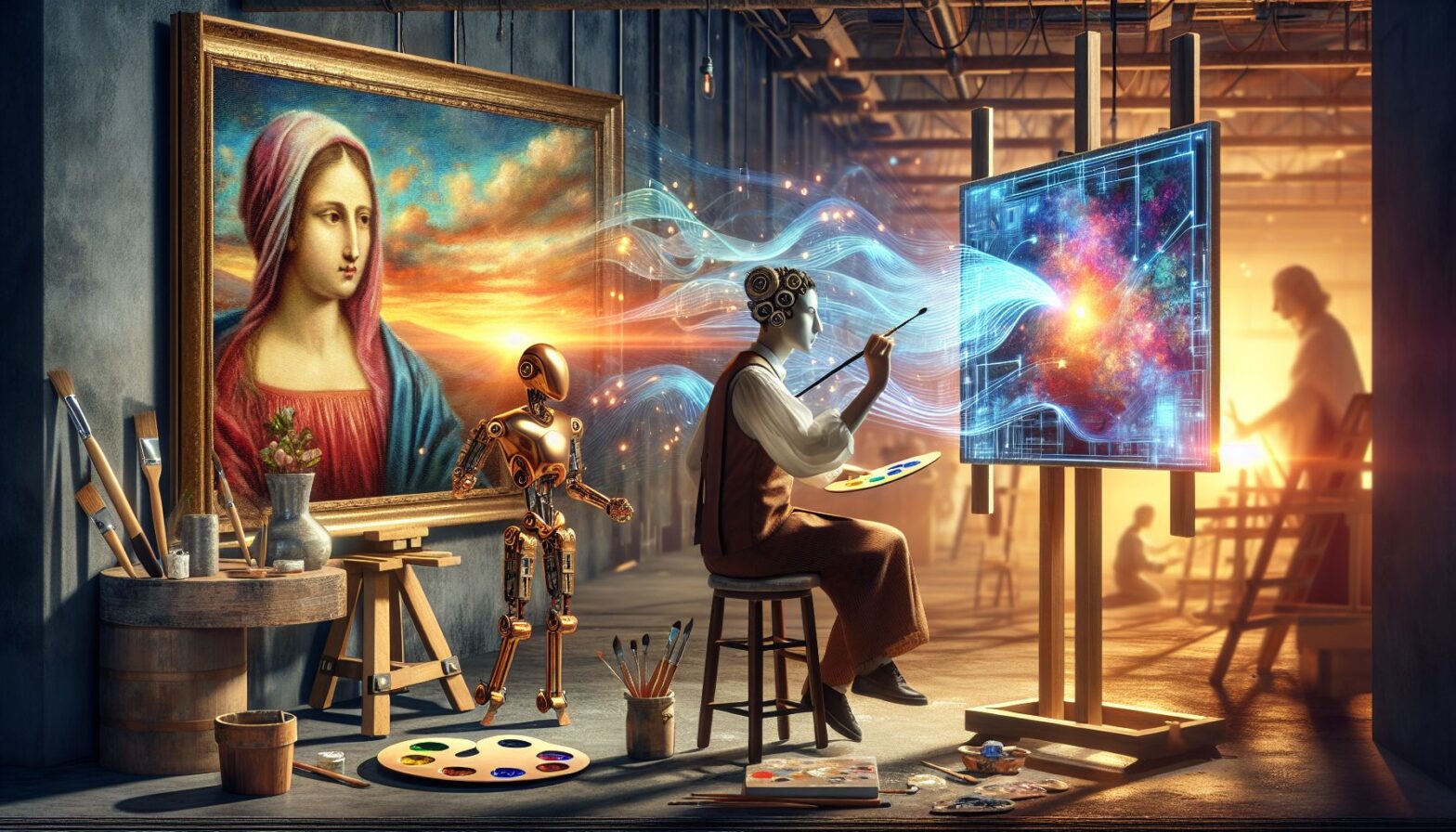Every piece of content you create today carries a hidden expiration date not for its existence, but for its comprehensibility, revealing the digital permanence paradox that nobody’s discussing: the growing chasm between how long digital content survives and how quickly the cultural context required to understand it disappears.
This isn’t about bit rot or server failures. It’s about something far more insidious semantic decay. Your perfectly preserved 4K video, your meticulously written article, your carefully crafted social media post will exist indefinitely in pristine digital form while becoming progressively unintelligible to future audiences who lack the cultural reference points, algorithmic literacy, and contextual frameworks necessary to decode their meaning.
We’re creating the world’s largest library of incomprehensible artifacts, and almost nobody recognizes it’s happening.
The Illusion of Digital Preservation
The digital preservation community has spent decades solving technical challenges: preventing bit rot, migrating formats, maintaining hardware compatibility, ensuring files remain readable across technological generations. These are real problems requiring sophisticated solutions, and substantial progress has been made.
Archives now employ strategies like format migration (converting files to newer standards), emulation (preserving old software environments), and redundancy (multiple copies across geographic locations) to ensure digital materials survive. International standards like OAIS (Open Archival Information System) provide frameworks for long-term preservation. Organizations invest millions ensuring their digital holdings remain technically accessible.
But technical accessibility and meaningful accessibility are entirely different challenges.
Consider a TikTok video from 2023. The file format will likely remain readable in 2045. Archive.org might preserve it flawlessly. Yet will someone in 2045 understand why certain sounds trigger specific emotional responses? Why particular gestures carry layered meanings? Why three seconds of a specific song fragment communicates volumes to 2023 audiences but reads as random noise to future viewers?
The technical artifact survives. The meaning evaporates.
This is semantic decay the gradual erosion of the cultural, contextual, and algorithmic knowledge required to interpret digital content as its creators intended. And it’s accelerating faster than technical obsolescence ever did.
The Three Layers of Digital Meaning
To understand why digital content loses meaning faster than it loses technical accessibility, we need to examine the three layers that enable comprehension:
Layer One: Surface Content
This is what preservation efforts focus on the literal text, images, audio, and video that comprise digital artifacts. When archivists ensure a 1990s website remains viewable, they’re preserving surface content. When format migration converts old video codecs to modern standards, surface content is maintained.
But surface content is merely the carrier signal. It’s necessary but insufficient for meaning.
Layer Two: Cultural Context
Every piece of content exists within dense webs of cultural reference that creators assume audiences share. A 2020 article mentioning “Karen” behavior assumes readers understand the cultural meme. References to “living in a pandemic” carry emotional weight audiences in 2020-2022 intuitively grasped. Discussions about “being in your flop era” or “giving main character energy” embed meaning within extremely specific cultural moments.
Remove the cultural context, and surface content becomes anthropological mystery. Future readers might decode literal definitions but miss the emotional valence, social implications, and communicative intent entirely.
Cultural context decays faster than technical formats because it’s not systematically preserved. We archive websites but not the cultural consensus that made their content meaningful.
Layer Three: Algorithmic Mediation
This is the layer almost nobody discusses, yet it’s increasingly fundamental to how digital content functions.
Modern content isn’t consumed in isolation it’s delivered, filtered, personalized, and contextualized by algorithms that shape meaning through presentation. A YouTube video’s meaning changes based on what algorithm recommended it, what appeared before it, what’s suggested next. Instagram posts gain meaning from their algorithmic positioning within feeds, their relationship to trending topics the algorithm surfaces, the specific audience segments the algorithm chose to show them to.
When we preserve content without preserving the algorithmic context that mediated its consumption, we’re preserving words without sentences, notes without melodies. The artifact survives, but the performance the actual experienced meaning is lost.
The Hybrid Creativity Trap: Paradox of Digital Permanence

The rise of human AI collaboration in creative production accelerates semantic decay in ways neither creators nor audiences fully recognize.
When humans collaborate with AI systems, the resulting artifacts embed assumptions about how both parties function. A 2025 article partially written with AI assistance assumes readers understand what AI can and cannot contribute where human creativity shapes narrative, where AI processing generates iterations, where hybrid intelligence produces something neither could achieve independently.
Strip away this understanding, and future readers face interpretive chaos. Did a human write this sentence, or did AI generate it from prompts? Was this creative decision driven by human intuition, algorithmic suggestion, or true collaborative emergence? The artifact contains no metadata distinguishing sources, yet the distinction profoundly affects interpretation.
Research on human-AI collaboration reveals that hybrid creative workflows produce outputs with “cognitive synergy” enhanced problem solving capacity emerging from human intuition combined with AI computational power. Designers bring emotional depth and contextual awareness; AI contributes pattern recognition and rapid iteration. The resulting work reflects this partnership in ways often invisible to observers who don’t understand the collaborative process.
As hybrid creativity becomes ubiquitous, all creative output begins carrying this interpretive ambiguity. Future audiences examining 2025 content will struggle determining what represented human creative vision versus AI processing versus genuine collaborative emergence and that distinction matters for understanding intent, meaning, and cultural significance.
Algorithmic Authenticity and the Erosion of Creative Signals
The concept of “algorithmic authenticity” reveals another dimension of semantic decay nobody’s adequately addressing.
Content creators increasingly optimize for algorithmic visibility rather than human communication. Instagram captions include specific phrases because algorithms reward them. TikTok videos adopt trending sounds not because they enhance meaning but because they trigger algorithmic promotion. YouTube thumbnails employ visual strategies designed to exploit recommendation systems.
This creates content where substantial meaning exists not in what’s explicitly communicated but in demonstrating mastery of algorithmic requirements. The artifact says one thing; the meta-communication about algorithmic literacy says another. Future audiences lacking context about 2025 recommendation algorithms will miss entire layers of meaning embedded in these optimization strategies.
Research on algorithmic trends replacing authenticity in creative industries highlights how creators increasingly produce work that mimics algorithmically-successful patterns rather than expressing genuine creative vision. Fashion designers create AI-predicted trends rather than original aesthetics. Musicians compose according to Spotify algorithm preferences. Writers structure narratives around SEO requirements.
The resulting content functions as communication only when audiences understand the algorithmic context shaping its creation. Remove that context, and artifacts appear as bizarre imitations technically competent but spiritually hollow, optimized for mysterious criteria nobody remembers.
Case Study: The Unreadable Internet of 2010
We don’t need to speculate about semantic decay we’re already experiencing it with content barely 15 years old.
Try showing someone born in 2010 a screenshot of a 2010 Twitter feed. The technical artifact is perfectly preserved. But understanding it requires contextual knowledge that’s already substantially lost:
- Why are messages limited to 140 characters? (The technical constraint shaped communication style, but explaining it requires understanding SMS infrastructure limits that motivated the original design.)
- What’s a “retweet” and why does “RT @username” appear in some messages? (The manual retweet convention predated Twitter’s official retweet feature, but newer users never experienced this evolutionary phase.)
- Why do some messages include hashtags while others don’t? (Hashtag culture was emerging but not ubiquitous; their presence or absence carried social signaling that’s now invisible.)
- What does “trending topic” mean when Twitter algorithmically decided what qualified? (The specific algorithmic logic of 2010 Twitter differed dramatically from current platforms, but those differences are lost to non-specialists.)
Each of these questions reveals semantic decay information technically preserved but culturally incomprehensible without extensive external context.
Now extend this forward. What will 2040 audiences make of 2025 content discussing “ChatGPT prompts,” “algorithm friendly content,” “BeReal authenticity,” or “AI-generated art ethics debates”? The surface content survives. The meaning requires contextual reconstruction that may be impossible.
The Metadata Crisis Nobody’s Solving
Traditional archival practice emphasizes metadata information describing content’s context, creation circumstances, and preservation history. Digital preservation standards mandate extensive metadata capturing technical details, provenance, and descriptive information.
But current metadata standards catastrophically fail at preserving the three layers of meaning digital content requires:
Cultural context metadata would need to capture:
- Specific cultural moments and their emotional valence
- Reference networks (what other content this assumes audiences know)
- Subcultural membership signals embedded in language, style, format
- Platform-specific norms and expectations
- Generational cohort assumptions about shared knowledge
No systematic preservation occurs for any of this.
Algorithmic mediation metadata would require documenting:
- Which algorithm delivered this content and under what logic
- What content appeared before/after in users’ feeds
- Personalization factors affecting presentation
- Trending status and algorithmic promotion at time of consumption
- Platform recommendation reasoning (to extent visible)
Not only is this metadata not preserved it’s often not even accessible to users in the moment, let alone archivists later.
Hybrid creation metadata needs to specify:
- Which portions involved AI assistance versus human creation
- Specific AI tools and their capabilities at time of creation
- Prompting strategies and iteration processes
- How human-AI collaboration shaped final output
- Cognitive division of labor between human and machine intelligence
Almost no creator systematically documents this, and preservation systems don’t request it.
The result: we’re preserving artifacts while losing the interpretive frameworks making them comprehensible.
Why This Matters More Than Technical Preservation
Technical preservation failures are visible and recoverable. When format obsolescence makes files unreadable, we recognize the problem and can apply retrospective solutions—format migration, emulation environments, software archaeology.
Semantic decay is invisible and potentially irreversible. Once the cultural context disappears, once the algorithmic mediation is forgotten, once the hybrid creative process becomes mysterious, recovering original meaning requires historical reconstruction that may be impossible.
Consider the implications for different content categories:
Historical records: Legal contracts, business communications, government documents all embed contextual assumptions. When future researchers examine 2025 corporate emails discussing “pivoting to AI-first workflows” or “optimizing for algorithm visibility,” will they understand what these phrases actually meant operationally? Technical preservation ensures words survive; semantic decay ensures meaning is lost.
Cultural artifacts: Books, films, music, art all communicate through cultural reference networks. Future audiences examining 2025 creative work will face the same interpretive challenges we face with ancient texts surface content preserved, contextual meaning largely inaccessible except through scholarly reconstruction.
Social communication: Personal communications, social media, blogs, vlogs all assume shared cultural contexts. Descendants examining ancestors’ digital lives will have the opposite of the traditional archival problem too much preserved content, too little comprehensibility.
Educational materials: Tutorials, courses, explainers all assume baseline knowledge. Future learners encountering 2025 educational content will struggle determining what’s fundamental versus what assumed now-lost contextual understanding.
The tragedy isn’t loss of content. It’s the preservation of incomprehensible content that creates illusions of continuity while actually representing radical discontinuity.
Potential Solutions (And Why They’re Inadequate)
Several approaches could theoretically address semantic decay, though each faces substantial limitations:
Ethnographic Documentation
Systematically documenting cultural contexts, platform norms, and algorithmic mediation alongside preserved content would maintain interpretive frameworks. Digital ethnographers could capture the contextual knowledge making content comprehensible.
The problem: This requires orders of magnitude more resources than technical preservation. Who funds extensive ethnographic documentation of every cultural moment? How do we even identify which contexts will prove necessary for future interpretation?
Algorithmic Archaeology
Preserving not just content but the algorithms mediating its consumption would enable future audiences to recreate original experiences. Digital preservation could include platform source code, algorithmic logic, and interface designs.
The problem: Platforms don’t publish algorithmic details, making preservation impossible. Even with access, algorithms interact with massive datasets and user graphs that can’t be preserved. Recreating original algorithmic contexts may be technically impossible.
Comprehensive Metadata Standards
Expanding metadata requirements to include cultural context, algorithmic mediation, and hybrid creation details would preserve interpretive frameworks.
The problem: Creators won’t voluntarily produce this metadata it’s burdensome and doesn’t serve immediate needs. Automated metadata generation can’t capture subjective cultural contexts. Standards could mandate richer metadata but couldn’t enforce comprehensive compliance.
AI-Assisted Context Reconstruction
Future AI systems could potentially reconstruct lost cultural contexts through analysis of preserved content, identifying patterns and inferring meanings.
The problem: Reconstruction isn’t recovery it’s speculation. AI might infer plausible contexts, but plausibility doesn’t guarantee accuracy. We’d trade authentic incomprehensibility for reconstructed meaning that might be entirely wrong.
None of these solutions adequately addresses the core challenge: semantic decay occurs passively and invisibly while technical preservation requires active, resource-intensive effort. We’ll always preserve bits more successfully than meanings.
Living With Permanent Impermanence
Perhaps the real insight isn’t that we need to solve semantic decay but that we need to accept it as fundamental to digital existence.
Traditional media created illusions of permanence through their physicality. Books endured for centuries, carrying the (false) promise that future generations would comprehend them as we do. Digital media makes the ephemeral nature of meaning explicit—artifacts survive indefinitely while their interpretability has measurable half-lives.
This isn’t necessarily catastrophic. Maybe meaning was always temporary, and digital permanence simply makes this truth visible. Ancient texts survive physically but require extensive scholarly interpretation to access their meanings. Perhaps 2025 content will face similar futures—technically preserved, culturally foreign, requiring specialist expertise to decode.
The difference is scale. We’re producing orders of magnitude more content than any previous generation while preserving it orders of magnitude more reliably. Future historians will face not scarcity but incomprehensible abundance terabytes of perfectly preserved, largely meaningless artifacts.
Implications for Content Creators
If you’re creating content with aspirations beyond immediate consumption, understanding semantic decay changes how you approach creation:
1. Accept that meaning is temporary. Your content’s comprehensibility has an expiration date shorter than its technical existence. Create for your immediate audience rather than imagined future readers who may lack the context to understand you.
2. Consider comprehensive documentation. If your work has potential historical significance, invest in documenting cultural contexts, creative processes, and interpretive frameworks alongside the work itself. Don’t assume future audiences will reconstruct meanings you consider obvious.
3. Recognize algorithmic mediation as part of meaning. Content isn’t what you create—it’s what audiences experience through algorithmic delivery. If you’re optimizing for algorithms, document why and how, because future audiences won’t understand those choices without explanation.
4. Preserve the hybrid process. If you’re collaborating with AI systems, document the division of creative labor. What did you contribute? What did AI generate? How did collaboration shape the outcome? This context matters for interpretation.
5. Accept incomprehensibility as inevitable. Some portion of your content’s meaning will be inaccessible to future audiences regardless of preservation efforts. That’s not failure it’s the nature of communication across time in rapidly evolving cultural contexts.
Conclusion: The Library of Babel We’re Building
Jorge Luis Borges imagined a Library of Babel, an infinite library containing every possible book, most of which are incomprehensible gibberish. We’re building something similar but inverted: a digital archive where nearly everything is technically comprehensible (proper grammar, readable formats, playable media) but semantically opaque because we lack the contextual frameworks making sense of it.
Future researchers examining 2025 digital culture will face not the traditional archival challenge of fragmentary, degraded sources but rather overwhelming abundance of pristinely preserved incomprehensibility. They’ll have too much data and too little understanding a crisis of interpretation, not preservation.
The paradox of digital permanence is that our success at preserving artifacts intensifies our failure at preserving meanings. Every technical advance in digital preservation better formats, more reliable storage, comprehensive archiving widens the gap between artifact survival and meaning accessibility.
We’re creating digital pharaonic tombs perfectly sealed vaults containing treasures whose significance we can only partially reconstruct because the culture that created them exists only in its own material remains. Future digital archaeologists will excavate our content with the same mixture of fascination and frustration that modern archaeologists feel examining ancient civilizations known only through artifacts whose meanings remain mysterious.
Perhaps that’s acceptable. Perhaps meaning doesn’t need to transcend its moment. Perhaps we’re meant to create for our contemporaries who share our cultural contexts, algorithmic literacy, and hybrid creative understanding, accepting that future audiences will construct their own interpretations from our incomprehensible artifacts.
Or perhaps we should recognize semantic decay as a solvable problem requiring the same systematic effort we’ve applied to technical preservation acknowledging that preserving meaning demands preserving culture, algorithms, and creative processes alongside bits and bytes.
Either way, the paradox persists: your content will outlive its meaning. The question is whether that troubles you enough to do something about it, or whether you accept impermanent permanence as the price of digital existence.
The library we’re building will endure for centuries. Whether anyone will understand what’s in it remains profoundly uncertain.









Leave a Reply